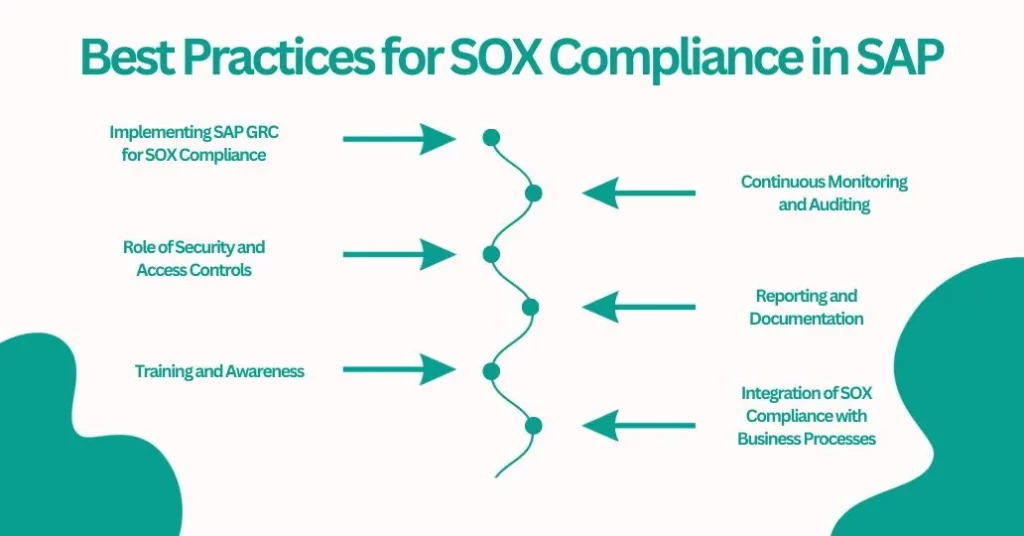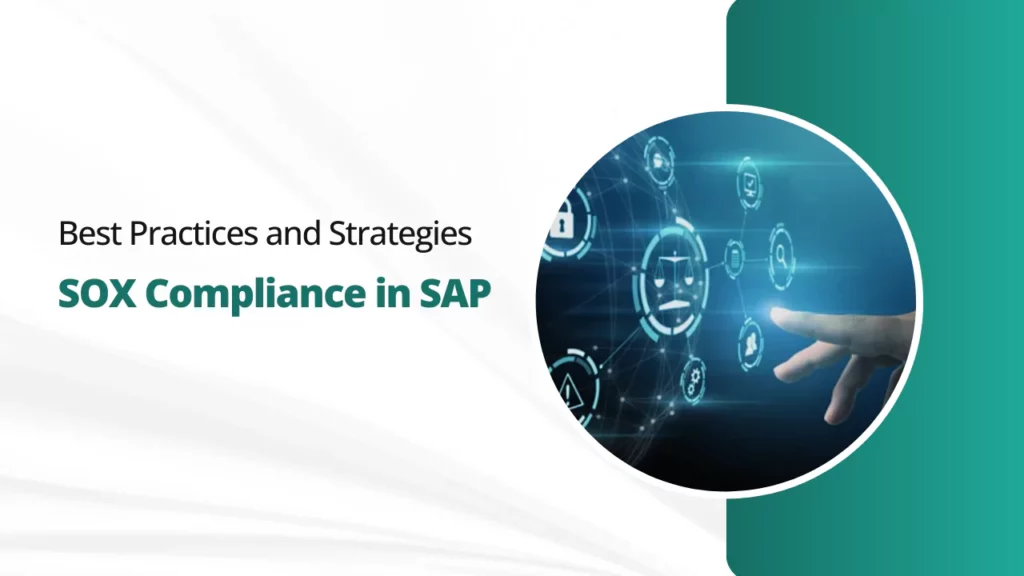Ensuring regulatory compliance is paramount for organizations in the business landscape. SOX compliance, in the context of SAP, is a critical aspect of financial and data security. This article is about the best practices and strategies to achieve SOX compliance in SAP. We will emphasize the importance of these regulations and the benefits they offer. So let’s continue:
SOX Compliance in SAP
SOX, enacted in 2002, responded to corporate accounting scandals in the United States. It aims to enhance financial transparency and accountability within organizations. Compliance with SOX regulations is essential for companies. Non-compliance can lead to severe penalties and legal consequences.
SAP, an enterprise software, is vital in financial and data management. Ensuring SOX compliance within SAP is very crucial. It maintains the data integrity and the security of financial transactions.
Critical Components of SOX Compliance
Internal Controls: Establishing adequate internal controls to prevent fraudulent activities and errors.
Documentation: Maintaining comprehensive documentation of financial processes and controls.
Data Security: Ensuring data security prevents unauthorized access to sensitive financial information.
Auditing: Regular auditing to identify and address any compliance issues.
Challenges in Achieving SOX Compliance
- Achieving SOX compliance in SAP can be a complex and daunting task. Here are the obstacles organizations often face in their pursuit of SOX compliance:
- SOX compliance requirements can change over time. Staying up-to-date with these regulations is a constant challenge.
- Aligning your IT systems, including SAP, with SOX requirements can be complex. Integrating SOX controls within these systems without disrupting operations requires careful planning.
- Businesses are dynamic, and their structures and processes evolve. Adapting to these changes can be challenging, especially for large organizations.
- Compliance initiatives demand significant resources, including time, finances, and skilled personnel. Allocating these resources can be a challenge, especially for smaller companies.
- SOX compliance requires meticulous documentation and record-keeping. Managing a large volume of financial data and ensuring its accuracy can be demanding.
- Organizations should prepare SOX audits. Being audit-ready at all times can be time-consuming, as auditors can visit at any moment.
- All employees need to understand the importance of SOX compliance. Providing comprehensive training and fostering awareness is essential.
- The costs associated with compliance initiatives can strain a company’s budget. Balancing these costs with the need for effective compliance is a constant challenge.
Best Practices for SOX Compliance in SAP

To navigate the challenges and achieve successful compliance, consider the following best practices:
1. Implementing SAP GRC for SOX Compliance
SAP GR) solutions provide tools and functionalities that help automate SOX compliance processes.
2. Role of Security and Access Controls
Access controls in SAP ensure that only authorized personnel can access critical financial data.
3. Training and Awareness
Invest in continuous training and create awareness about the importance of SOX compliance.
4. Continuous Monitoring and Auditing
Monitor and audit financial transactions to identify and address compliance issues.
5. Reporting and Documentation
Maintain detailed records and generate compliance reports as required by SOX regulations.
6. Integration of SOX Compliance with Business Processes
Integrate compliance requirements into everyday business processes to ensure consistency and efficiency.
Benefits of Effective SOX Compliance
Effective SOX compliance in SAP leads to several benefits. It includes enhanced data security, reduced financial risks, and increased investor confidence.
Here are some of the benefits of SOX Compliance in SAP:
1. Enhanced Data Security:
By ensuring SOX compliance, you’re strengthening the security of your financial data. This not only protects data breaches but also builds trust with your customers.
2. Reduced Financial Risks:
Effective compliance measures help identify and prevent financial irregularities, fraud, and errors. This reduces the risk of financial losses and costly legal consequences.
3. Improved Corporate Governance:
SOX compliance promotes better corporate governance by enforcing transparency and accountability. This, in turn, fosters a culture of ethical behavior within your organization.
4. Increased Investor Confidence:
Investors place a high value on companies that firmly comply with SOX regulations. When they see that your financial reporting is accurate and reliable, their confidence in your business grows.
5. Competitive Advantage:
Compliance can be a selling point for your company. When customers and partners know you’re committed to SOX compliance, it sets you apart from competitors.
6. Efficient Business Operations:
Integrating compliance requirements into your daily processes can lead to smoother operations. When compliance becomes a part of your business culture, it reduces the burden of meeting regulatory standards. It also ensures consistency in how you manage financial data.
Conclusion
Achieving SOX compliance in SAP is a regulatory necessity. It is also a strategic move to secure financial data and build stakeholder trust. By following these practices and strategies, organizations can reap compliance benefits.
If you are looking for professional help related to SOX compliance in SAP, contact us and let us handle it.




